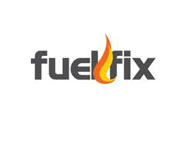Commentary: Knowledge has helped industry drill safely in Arctic for decades

 Fuel Fix | September 9, 2016 | Nikki Martin
Fuel Fix | September 9, 2016 | Nikki Martin
As environmental groups continue to try to find ways to ban fossil fuel development, they often point to pictures of snow-covered tundras to make the point that we “just don’t know enough” about the Arctic environment to be able to operate there safely. As a part of an industry that has pioneered technology to take pictures thousands of feet below the earth’s surface without drilling a single hole, it’s hard to agree with that assessment.
We know a lot more about the Arctic environment than activists claim, and this knowledge has helped the industry operate in the region safely and responsibly for many decades. As the Department of the Interior finalizes its 2017-2022 offshore leasing program, it should use this breadth of expertise to inform the drafting process – and allow Arctic oil and gas lease sales in the coming years.
The companies we represent provide industry with the understanding of the physical environment it needs to operate, including detailed, three-dimensional pictures of rock formations thousands of feet below the surface before a drill bit has even touched the ground. Those pictures allow petroleum engineers to predict where oil and gas resources are likely located, plan for potential hazards like shallow gas pockets and faults, select the equipment best suited to the conditions, and drill with the smallest footprint possible.
We have used this kind of technology all over the world – including in the Arctic, for over five decades now – so we know exactly what lies beneath those snow-covered tundras. And the potential is enormous. According to the U.S. Geological Survey, the American Arctic holds 34 billion barrels of oil equivalent of oil, about 15 years of U.S. net oil imports at 2015 levels, and another 60 barrel of oil equivalent of gas.
But what we know doesn’t stop there. We have also seen that Arctic oil and gas development can take place safely and responsibly – as it has for decades now, ever since the first commercial well was drilled in the Canadian Arctic in 1920 and the first offshore Arctic oil field began production in 1986. In fact, the industry’s long history of operating in Arctic conditions has facilitated technological advancements that have made development safer and minimized industry’s footprint on the environment.
We also know a great deal about the wildlife and the animals that inhabit the Arctic. The Geological Survey has been collecting Arctic geological and botanical information ever since the late 1800s, and two federal agencies began a comprehensive environmental assessment of the offshore Arctic in 1973.
Read the full op-ed here.
Nikki Martin is the President of the International Association of Geophysical Contractors.

